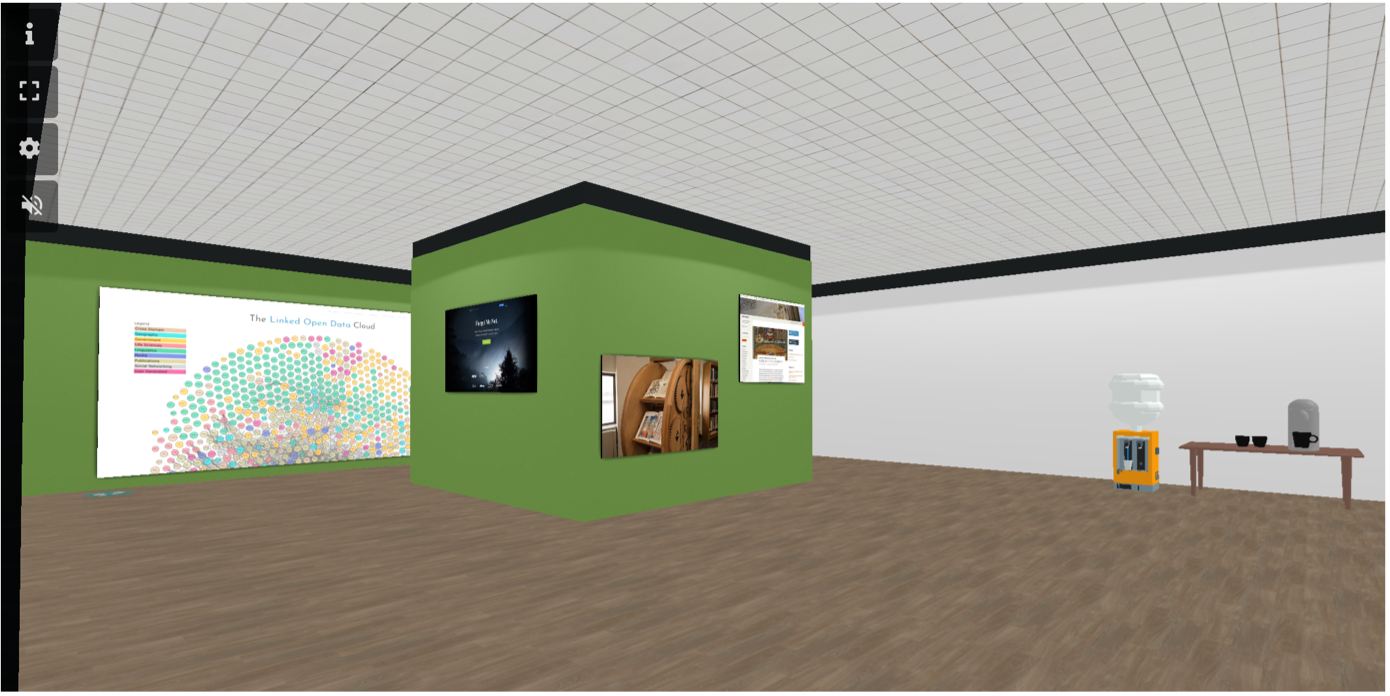Seminar Blogs
“Searching Serendipity Between the Cracks: Hybrid Media as a Space for Happy Accidents” – Danny Steur
Living through various lockdowns and pandemic limitations for over a year now, I have not (either have not been able to or have not dared to) paid a visit to a museum for what seems like a personal record length. Fittingly, Utrecht University research group Subjects in Interdisciplinary Learning (SILT) has crafted a beautiful online exhibition environment, oriented around the question of serendipity. The exhibit featured four colored rooms with each their own themes, which connected to, highlighted examples of, or otherwise inspired serendipity and serendipitous encounters. Frédéric Darbellay et al., in an article on the role of serendipity in interdisciplinary research, contend that interdisciplinary can be boosted by the creative process of serendipity, which crucially entails “discovering with a completely open mind […] things that are not being searched for” (2014, 10). Vice versa it intuitively makes sense that interdisciplinarity provides a fertile ground for serendipitous findings, given that researchers encounter objects, practices and perspectives dissimilar to their own. Here though, SILT’s serendipity-encouraging virtual environment inspires me to explore another inter-, and how it might stimulate serendipitous creative discoveries: intermediality and hybridity.

A Look Inside the SILT Exhibit
The online exhibit presents a three-dimensional navigable space exhibiting texts, images, videos and other objects as items in a museum, calling to mind the way in which Lev Manovich describes media hybridization. Softwarization, for Manovich, enables a situation in which “the unique properties and techniques of different media have become software elements that can be combined together in previously impossible ways” (Manovich 2013, 176), with those combinations being more than simply putting media side-by-side but rather them hybridizing into something new, a media format put together from building blocks provided by the “computer metamedium” (Manovich 2013, 181). The exhibit functions as such a hybrid medium, in that it presents one medium (three-dimensional digital space) as an interface to others (such as images and articles).
However, the notion of hybridity in intermediality discourses is somewhat contested, as Robin Nelson notes: it implies “a hierarchical relation privileging an originary term, rather than the combination of media on a basis of equivalence” (2010, 18), leading some authors to adopt the term syncretism, which instead denotes “a heterogeneous front of distinct [elements] in altered relations to each other” while still doing more than positioning media simply next to each other (Becquer and Gatti 2005, 447). Nonetheless, I believe hybridity can generatively inform our discussion due to its transdisciplinary travels, especially its postcolonial adoption in the writing of Homi Bhabha, who asserts that hybridities emerge from the “interstitial passage between fixed identifications” (1994, 4), in-between spaces where distinctions blur. For Bhabha, hybridities possess a subversive potential, as they upset and destabilize discriminatory categorizations (1994, 113), and it is this subversive potential of hybridities that might precisely support serendipitous encounters through intermedial practices (Bhabha 1994, 4). Perhaps intermedial practices of hybridization, which require different skillsets and orientations, can stimulate serendipitous encounters as well, as they shed new light on conventionally delimited medial objects, fostering new perspectives and approaches. Similarly to interdisciplinary work though, as with all serendipitous findings, is a researcher’s attitude: it requires an open mind as well as a “sagacity in a spirit of discovery and innovation” (Darbellay et al. 2014, 6).
References
- Bequer, Marcos and José Gatti. 2005. “Elements of Vogue.” In The Subcultures Reader, 2nd edition, edited by Ken Gelder and Sarah Thornton, 445-453. London: Routledge.
- Bhabha, Homi K. 1994. The Location of Culture. London: Routledge.
- Darbellay, Frédéric, Zoe Moody, Ayuko Sedooka, and Gabriela Steffen. 2014. “Interdisciplinary Research Boosted by Serendipity.” Creativity Research Journal 26 (1): 1–10.
- Manovich, Lev. 2013. Software Takes Command: Extending the Language of New Media. New York: Bloomsbury.
- Nelson, Robin. 2010. “Introduction: Prospective Mapping and Network of Terms.” In Mapping Intermediality in Performance, edited by Sarah Bay-Cheng, Chiel Kattenbelt, Andy Lavender, and Robin Nelson, 13-25. Amsterdam: Amsterdam University Press.

